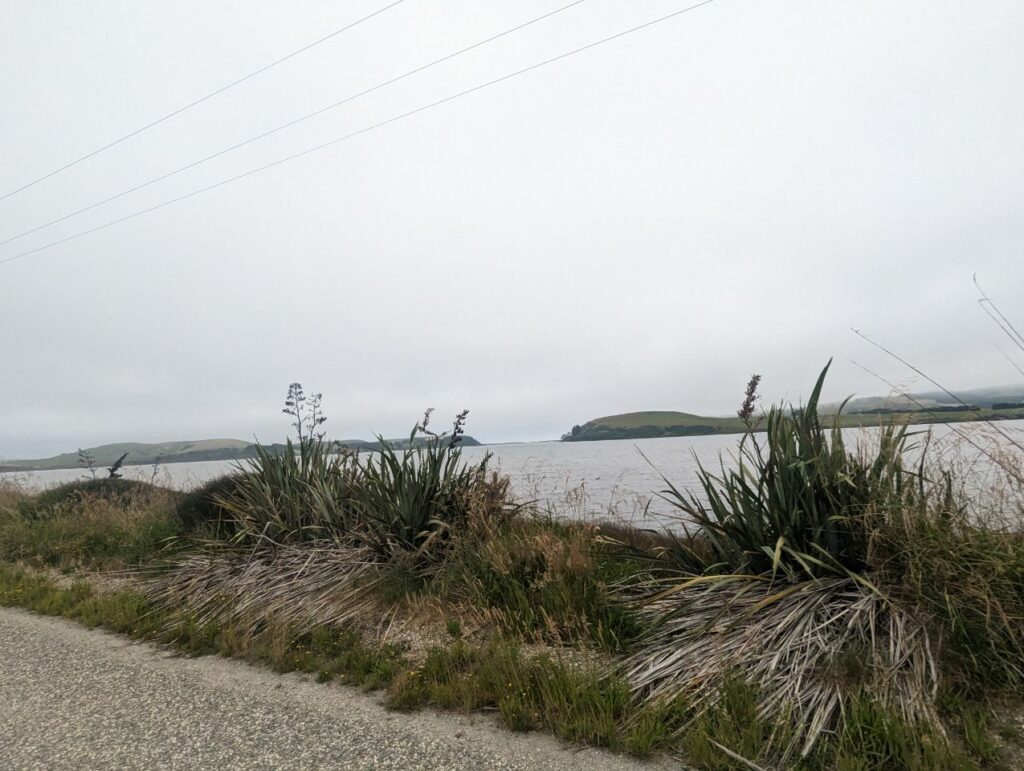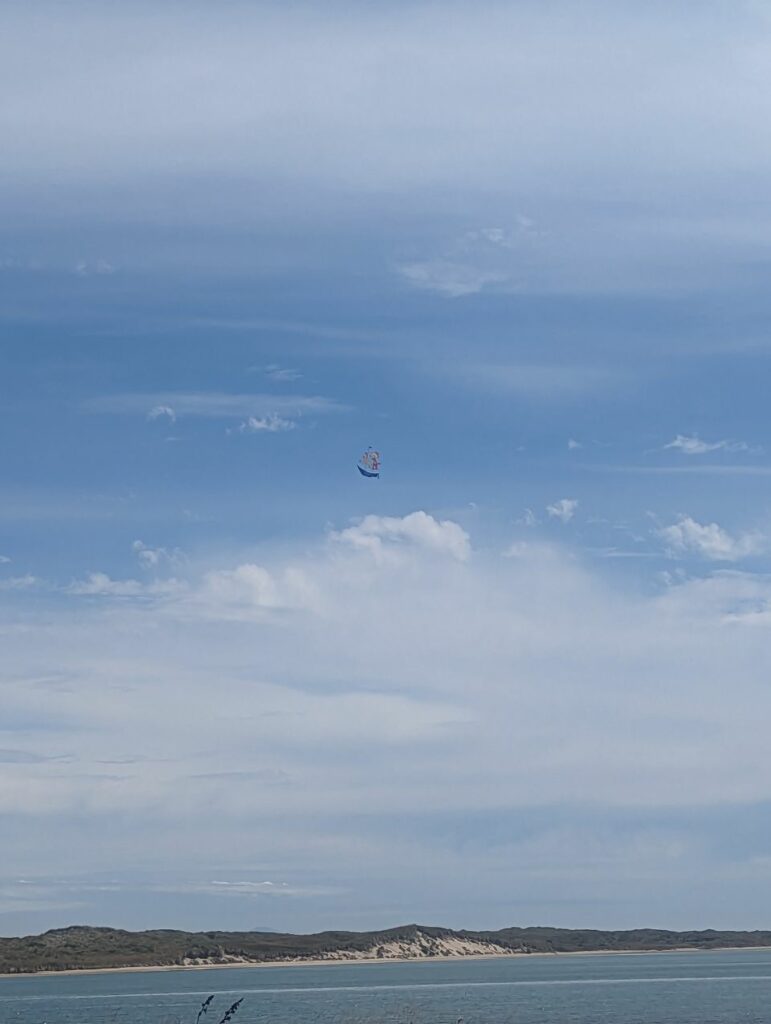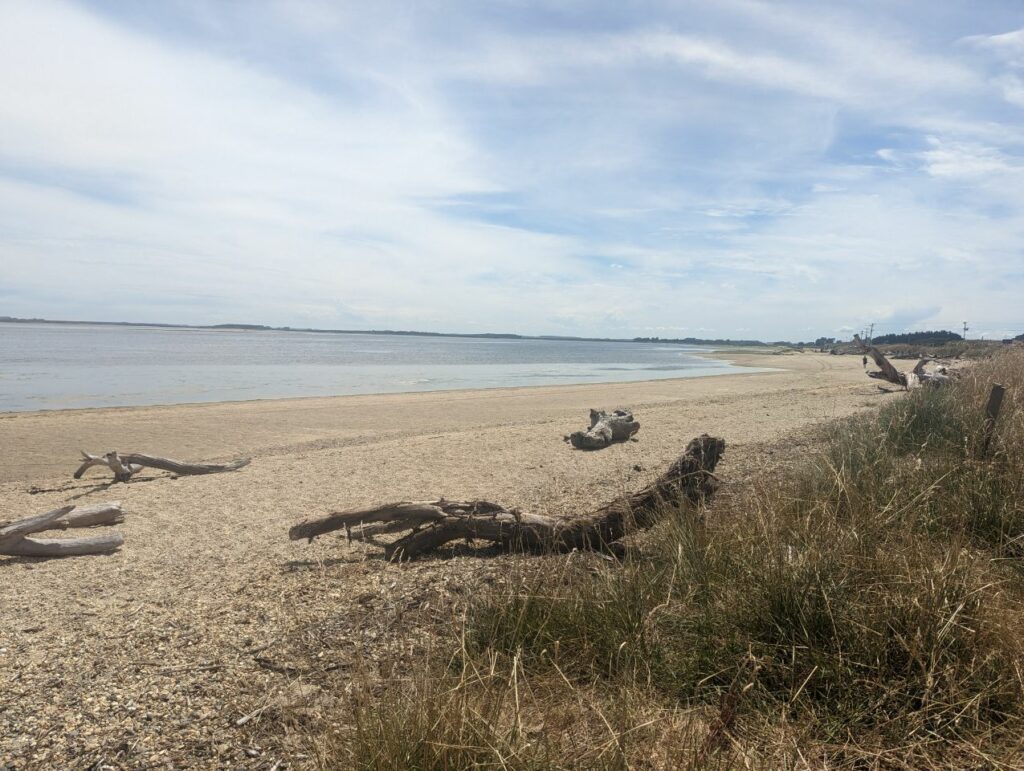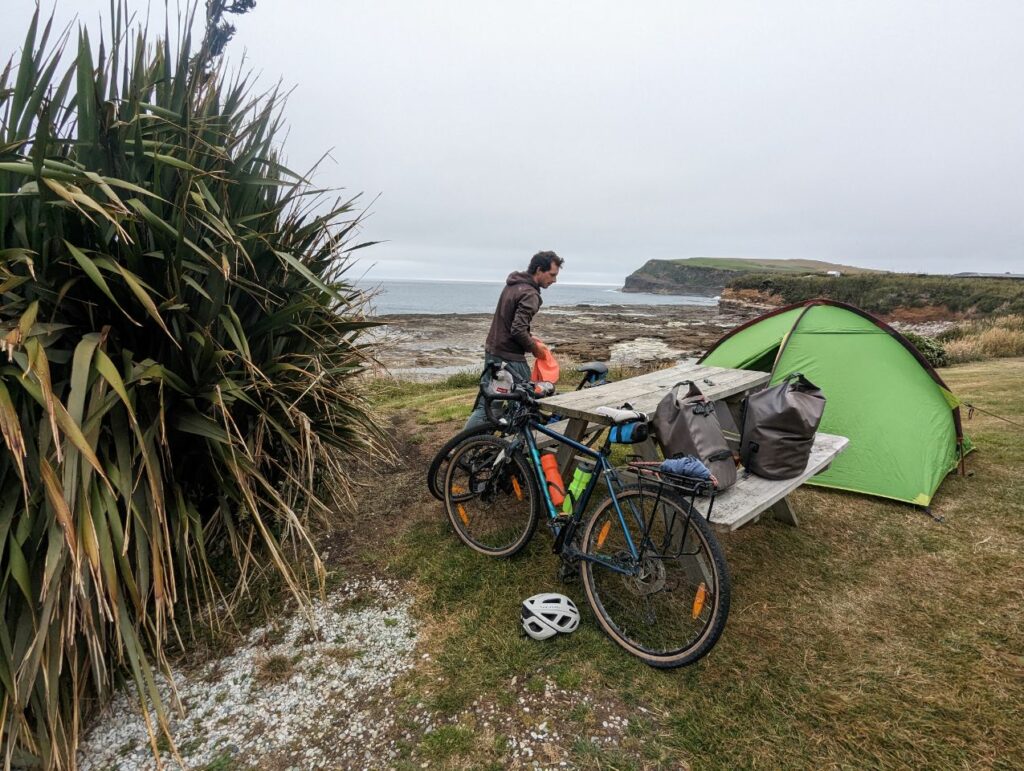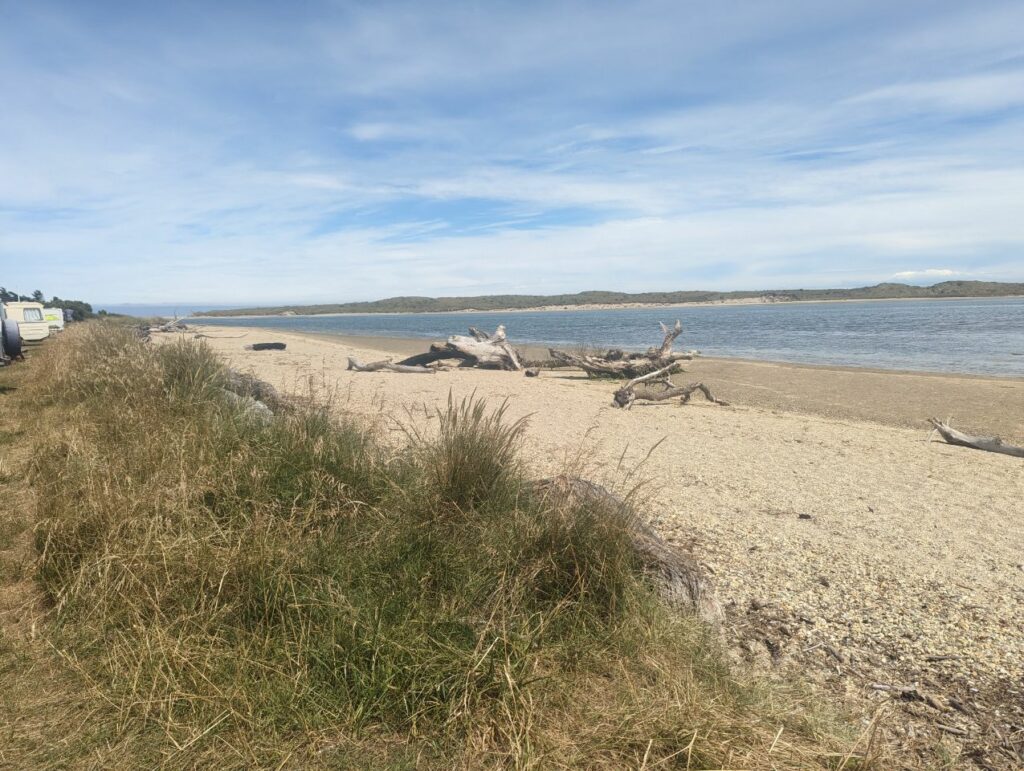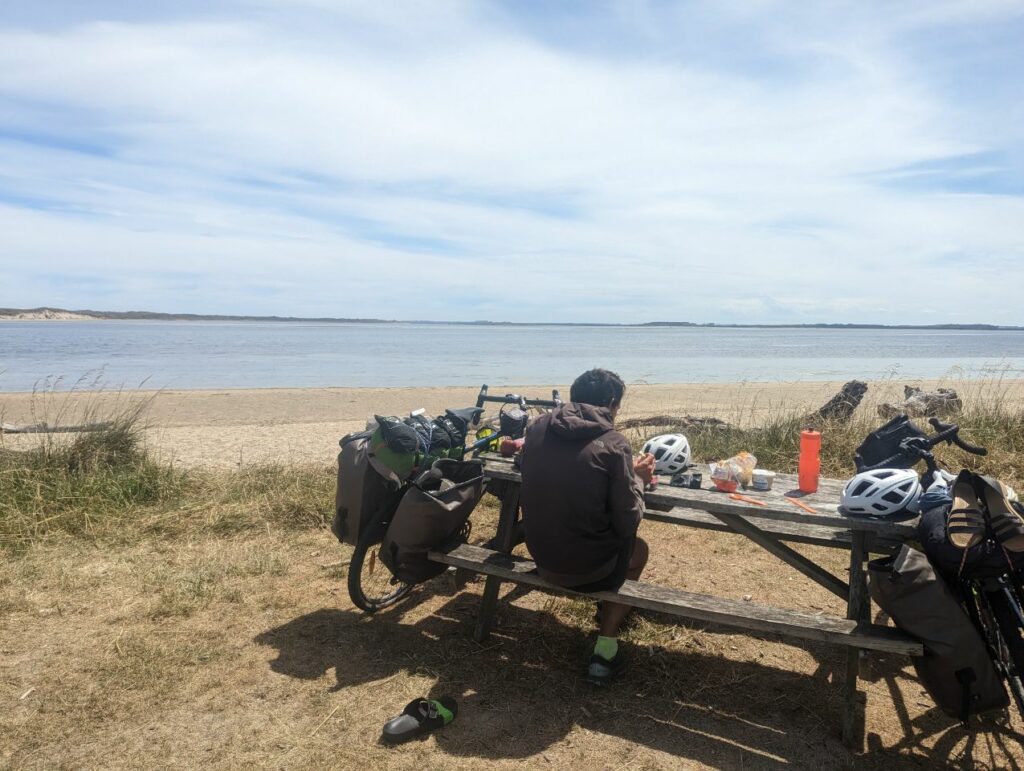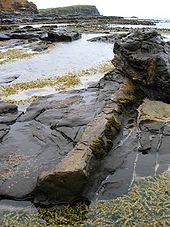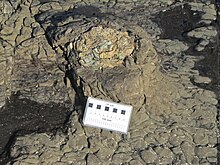Le record de km aujourd’hui depuis notre arrivée en NZ
Mais c’était une journée pas si difficile avec un petit crevage de pneu 10 km avant l’arrivée
Arrivée splendide sous les nuages mais magnifiques quand même
Martin court direct voir la plage des dauphins et en voit donc il saute à l’eau de suite bien qu’il fasse trop froid.
Moi je me préserve pour le lendemain ^^
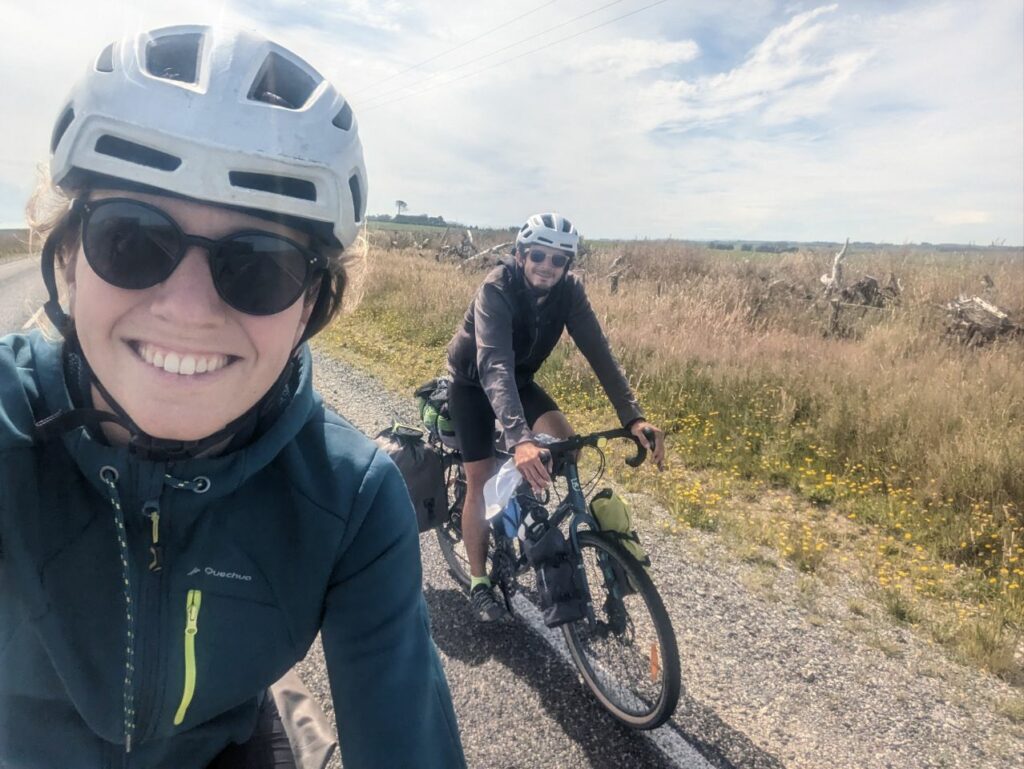
CURIO BAY 1
10 JANUARY 2023
Curio Bay is a coastal embayment in the Southland District of New Zealand, best known as the site of a petrified forest some 180 million years old. It also hosts a yellow-eyed penguin colony, arguably the rarest of penguin species, with approximately 1600 breeding pairs in the extant population. The bay, along with neighbouring Porpoise Bay, is home to the endemic Hector’s dolphin.[1] Southern right whales are occasionally observed offshore, as on numerous parts of the country’s coast.[2] Located near the southernmost point of the South Island,[3] Curio Bay is one of the major attractions in the Catlins, attracting around 100,000 visitors per year.[4] The town of Waikawa has an information center for tourists.
The now petrified logs, from ancient conifers closely related to modern kauri and Norfolk pine, were buried by ancient volcanic mud flows and gradually replaced by silica to produce the fossils now exposed by the sea.
The fossilised forest grew at a time of semi-tropical climate and before grasses and flowering plants had come into existence. The original forest of cycads, conifers and ferns was buried by massive floods of ash and volcanic debris either directly from a volcanic eruption or from later heavy rain on a barren volcanic mountain. Distinct bands of fossilised vegetation exposed in the cliff face indicate that in between such floods, the forest grew back at least four times over a period of some 20,000 years. Following this, the area remained buried over millions of years. Silica started to impregnate the wood and eventually turned it into stone, preserving not just tree stumps and wood, but in some places also fern fronds and leaves.[1]
Known fossil forests of this age are very few throughout the world, and this is one of the most extensive and least disturbed of them. The overall area stretches for 20 kilometres (12 mi) from Curio Bay to Slope Point.[1]
At low tide, the remaining tree stumps and logs are exposed and clearly visible. A short walkway leads from the car park at the end of the sealed road to a viewing platform over this internationally important area.[5] It is strictly prohibited to damage or remove anything from the area.

